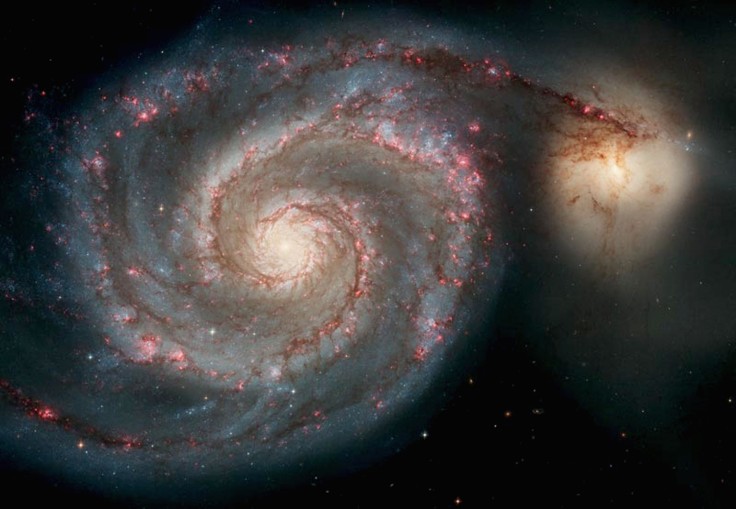
The Hubble Space Telescope snappe an amazing photo of a spiral galaxy that is 68 million light-years away from Earth. It's described as "jewel-bright," and for a good reason.
Hubble's Wide Field Camera 3 captured the image of galaxy NGC 1385 of the Fornax constellation. The space telescope still goes strong even after experiencing a concerning computer glitch a few weeks ago.
NASA Hubble Telescope Pictures of Heaven: Galaxy in a 'Furnace'
NASA's Hubble Space Telescope captured the incredible NGC 1385 galaxy showing off its spiral form. According to NASA, the galaxy is 68 million light-years from Earth.
The spiral galaxy NGC 1385 finds its home in the Fornax constellation. Unlike how other celestial bodies are usually named after an animal or ancient gods, Fornax simply means "furnace" in Latin.
✨ Happy #HubbleFriday! ✨
— Hubble (@NASAHubble) August 20, 2021
This image shows off the beautiful spiral galaxy NGC 1385, which is about 68 million light-years from Earth. It’s located in the Fornax constellation, which is the Latin word for furnace!
Explore more: https://t.co/sbiDVzUd5T pic.twitter.com/7mgSIIK1PS
Nicolas-Louis de Lacaille, a French astronomer born in 1713, gave the constellation its fiery name. In fact, Lacaille named 14 of the 88 constellations recognized today. Lacaille has named other constellations after scientific instruments such as Atlia for air pump, Norma for the ruler or set square, and Telescopium for the telescope.
Lacaille spotted the Fornax constellation on a trip to the Cape of Good Hope in 1751, said Digital Trends. He decided to name the constellation after a chemist's furnace to honor the work chemists did at the time.
The image was captured using Hubble's Wide Field Camera 3, said NASA, The camera is often referred to as Hubble's workhorse camera for its reliability and versatility.
the camera ➡️ the shot
— Hubble (@NASAHubble) August 19, 2021
(...from 130 million light-years away!)
Happy #WorldPhotographyDay from Hubble! Learn more about the dazzling spiral galaxy imaged here: https://t.co/VEZ826GzVX pic.twitter.com/FP9QAbYF45
Read also: NASA Mars Rover Pictures: Google Celebrates 125,428 Photos From Perseverance With Cool Video
Hubble Space Telescope Wide Field Camera 3
The Wide Field Camera 3 (WFC3) was installed by astronauts back in 2009 during NASA's fourth Hubble Servicing Mission. It had critical improvements that helped expand the telescope's voyage of discovery, per NASA.
The WFC3 is able to study a diverse range of objects and phenomena ranging from young and extremely distant galaxies to much more nearby stellar systems and those found within our very own solar system and exoplanets. This is how it earned its title as Hubble's workhorse camera.
A key feature of the WFC3 is its ability to span the electromagnetic spectrum from ultraviolet (UV) through visible light and into the near-infrared (NIR). Providing such a feature to Hubble extends the space telescope's capacity to see deeper into the universe and provide images in three broad regions of the spectrum, UV-Visible-NIR or "panchromatic" view.
A cosmic collision 💥
— Hubble (@NASAHubble) August 17, 2021
The pair of interacting galaxies in this #HubbleClassic view are 300 million light-years away in the constellation Draco.
This encounter pulled a long "tail" out of the galaxy on the right, which then wrapped behind its body: https://t.co/00ZzC5fIWK pic.twitter.com/7qmXhzFDYX
The sharp resolution and panchromatic view of the WFC3 allowed the Hubble to perform Deep-Sky Surveys, finding faraway galaxies with the help of a natural "cosmic lens" that would otherwise be too faint to see. Deep-Sky Surveys also help create more accurate dark-matter maps of the galaxy clusters in the census, NASA said.
The WFC3 also allowed astronomers to study the phenomenon of exploding stars. It was also the WFC3 that found the fourth and fifth moons circling the planet Pluto. It was also the camera that discovered the 14th known moon orbiting the planet Neptune.
The Wide Field Camera 3 has been imperative in the exploration of the cosmos beyond our solar system and an understanding of what lies beyond it.









